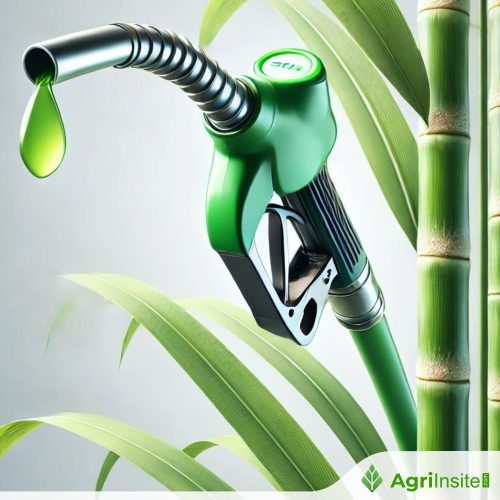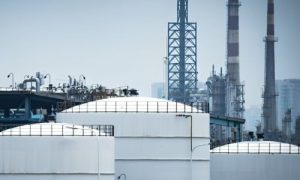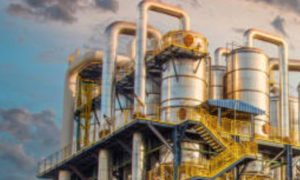Brazilian ethanol to seize market share from gasoline in 2024: Commodity Insights analyst

Brazil’s ethanol demand is projected to rise by 29% in 2024, reaching 238,000 barrels per day, while gasoline demand is expected to drop 5%. Ethanol is gaining market share due to favorable pricing, with E100 ethanol priced at about 66% of gasoline in São Paulo, making it a more attractive option. This shift is reducing the need for gasoline imports and helping Brazil increase refinery capacity utilization. The country’s biofuel industry sees this trend continuing as ethanol economics remain advantageous.
Ethanol demand in Brazil to soar 29% to 238,000 b/d in 2024
Gasoline demand to fall 5% to 684,000 b/d in 2024
Ethanol gains market share from gasoline due to favorable economics
The battle between ethanol and gasoline as the fuel of choice for Brazilian motorists is poised to remain hard-fought in the final months of the year. Biofuel is not only recovering previously lost market share but also gaining further ground as economics remain favorable at the pump.
S&P Global Commodity Insights Latin America short-term outlook projects demand for hydrous ethanol, or the E100 standalone biofuel, soaring to 238,000 barrels of gasoline equivalent per day in 2024, up by 29% on the year. Meanwhile, the outlook for conventional gasoline, or gasoline C, points to a fall of 5% compared to 2023, to 684,000 bge/d.
Brazil’s overall 2024 gasoline C and hydrous ethanol demand is expected to reach 922,000 bge/d, around 2% higher from 2023, according to the tallies.
“Relatively lower inflation, due to better economic situation, fuel prices at the pump, may favor record levels of fuel consumption,” Joao Lopes, Commodity Insights analyst, fuels and refining, said.
Demand for anhydrous, which is blended with gasoline at a 27% level, should stand at 134,000 bge/d, or a decrease of 4.9% on the year, reaffirming the bearish feelings about gasoline sales prospects.
The figures were not a surprise to market participants from the ethanol industry, who have largely seen more agreeable market conditions for retail biofuel sales this season than in 2023-24.
“Hydrous consumption has been exceptionally strong since late last year, and pump prices are still below parity in many states,” an analyst at one of the top Brazilian retail leaders told Commodity Insights. “On the other end, prices for domestic gasoline are below international benchmarks, so there is still upside.”
| Motor demand (000′ barrel of gasoline equivalent per day) | |||||
| Annual averages | Total motor gasoline | Gasoline C | Gasoline A | Anhydrous ethanol | Hydrous ethanol |
| 2012 | 735 | 624 | 512 | 112 | 111 |
| 2013 | 786 | 653 | 535 | 117 | 133 |
| 2014 | 846 | 699 | 573 | 126 | 147 |
| 2015 | 847 | 645 | 521 | 123 | 202 |
| 2016 | 836 | 671 | 540 | 131 | 165 |
| 2017 | 845 | 690 | 555 | 135 | 155 |
| 2018 | 819 | 600 | 482 | 117 | 220 |
| 2019 | 852 | 597 | 480 | 117 | 255 |
| 2020 | 776 | 559 | 449 | 109 | 218 |
| 2021 | 805 | 615 | 495 | 120 | 190 |
| 2022 | 849 | 673 | 541 | 132 | 176 |
| 2023 | 904 | 720 | 579 | 141 | 184 |
| 2024 | 922 | 684 | 550 | 134 | 238 |
| Source: S&P Global Commodity Insights, Agência Nacional do Petróleo, Gás Natural e Biocombustíveis (ANP), ComexStat | |||||
In Brazil, consumers with flex-fuel vehicles can fill their tanks with hydrous E100 ethanol or gasoline C. The local fuel industry generally believes that hydrous needs to be priced at 70% or lower than gasoline because of its energy content. E100’s nationwide price parity over the fossil fuel averaged 64% from January through September 2024, Brazilian oil regulator ANP data showed.
For now, October shows no changes to that scenario. In Southeast Brazil, a region home to main consuming markets such as the São Paulo state, the price ratio stood at 66% in the week ended Oct. 4, according to ANP’s latest retail motor fuel price survey.
Meanwhile, ethanol prices have recovered since the beginning of the year, paving the way for an improvement in producers’ margins. Based on reported deals and indications, Platts, part of Commodity Insights, assessed hydrous ex-mill Ribeirão Preto at Real 3,030/cu m on Oct. 9, up 32% from the Real 2,303/cu m level seen in the first trading session of the year on Jan. 2.
Imports, production figures
According to the Latin America short-term outlook, Brazil’s 2024 gasoline imports are expected to reach 50,000 b/d, about 10,000 b/d lower from 2023.
The lower import need is a consequence of higher E100 usage and also higher refinery rates.
“We expect needs for imports to decrease modestly in 2024 as demand for gasoline C eases and E100 regains market share, while refinery output remains high,” Lopes said.
Since the second half of 2023, an increase in E100’s market share and improved domestic production eased the need for gasoline imports.
State-led oil company Petrobras informed that capacity utilization at its refineries reached 96.8% in September, the highest monthly result of 2024. In the third quarter, usage reached 95.2% at the refineries.
In Q3, a record high was also set for Petrobras’ processing of pre-salt oil in its distillation units, with 73% of the total load processed, and a record production of gasoline with a volume of 6.38 million cu m in the quarter, the company said.















